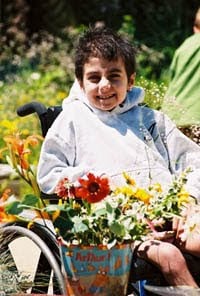 As many of you know, September represents National Childhood Cancer Awareness Month. As we commemorate the month, we will remember all the children who have lost their lives to the disease, think about all the children who will face life-long side effects from their treatments, rally behind all the children who are still actively fighting the disease, and continue our work to ensure that future generations will never have to battle childhood cancer.
As many of you know, September represents National Childhood Cancer Awareness Month. As we commemorate the month, we will remember all the children who have lost their lives to the disease, think about all the children who will face life-long side effects from their treatments, rally behind all the children who are still actively fighting the disease, and continue our work to ensure that future generations will never have to battle childhood cancer.This year alone in the United States over 12,000 children will be diagnosed with childhood cancer and nearly 3,000 of them will not survive. That number represents 3,000 children who will never experience the normal every day joys of life – going to school, hanging out with their friends, or simply being given the opportunity to grow up. Of those 12,000 children diagnosed, none of their lives will ever return to the “normal” that some of us take for granted. These facts are saddening, if children are the future of this country and the world – shouldn’t they be given the opportunity to live long and productive lives?
As we enter September, let’s all take a moment to reflect on the battles we have faced throughout our own lifetime. These battles have no doubt been difficult and challenging, and some of us may have even battled our own cancers. If that is the case, we know what it is like to go through treatments and navigate through the uncertainly or to see our loved ones do the same. Can you imagine feeling that way as a child? Our daughter Alex spent nearly her entire life battling her cancer, and throughout that time she came to one very important conclusion – she didn’t want any other children to endure what she had. Alex’s Lemonade Stand Foundation is here to do just that, to find better treatments and ultimately cures for all kids with cancer. Through your support, we are fortunate to say that we have made some very important steps in that direction.
We hope
 that everyone will take a few moments to spread the word about just how many children in the United States are affected by cancer. We are including some statistics below on the prevalence of childhood cancer, and we hope that you will share them with your family members, friends, colleagues and even strangers as we work this month to raise awareness of the disease as well as funds to find the cures that all of these children deserve.
that everyone will take a few moments to spread the word about just how many children in the United States are affected by cancer. We are including some statistics below on the prevalence of childhood cancer, and we hope that you will share them with your family members, friends, colleagues and even strangers as we work this month to raise awareness of the disease as well as funds to find the cures that all of these children deserve.- Liz and Jay Scott
- One in every 330 Americans develops cancer before the age of twenty.
- On the average, 36 children and adolescents are diagnosed with cancer everyday in the United States.
- On the average, one in every four elementary schools has a child with cancer. The average high school has two students who are current or former cancer patients.
- Cancer is the leading cause of death by disease in children under the age of 15 in the United States.
- Childhood cancers affect more potential patient-years of life than any other cancer except breast and lung cancer.
- The causes of most childhood cancers are unknown. At present, childhood cancer cannot be prevented.
- Childhood cancer occurs regularly, randomly and spares no ethnic group, socioeconomic class, or geographic region. In the United States, the incidence of cancer among adolescents and young adults is increasing at a greater rate than any other age group, except those over 65 years.
- Despite these facts, childhood cancer research is vastly and consistently underfunded.
September 3, 2010

